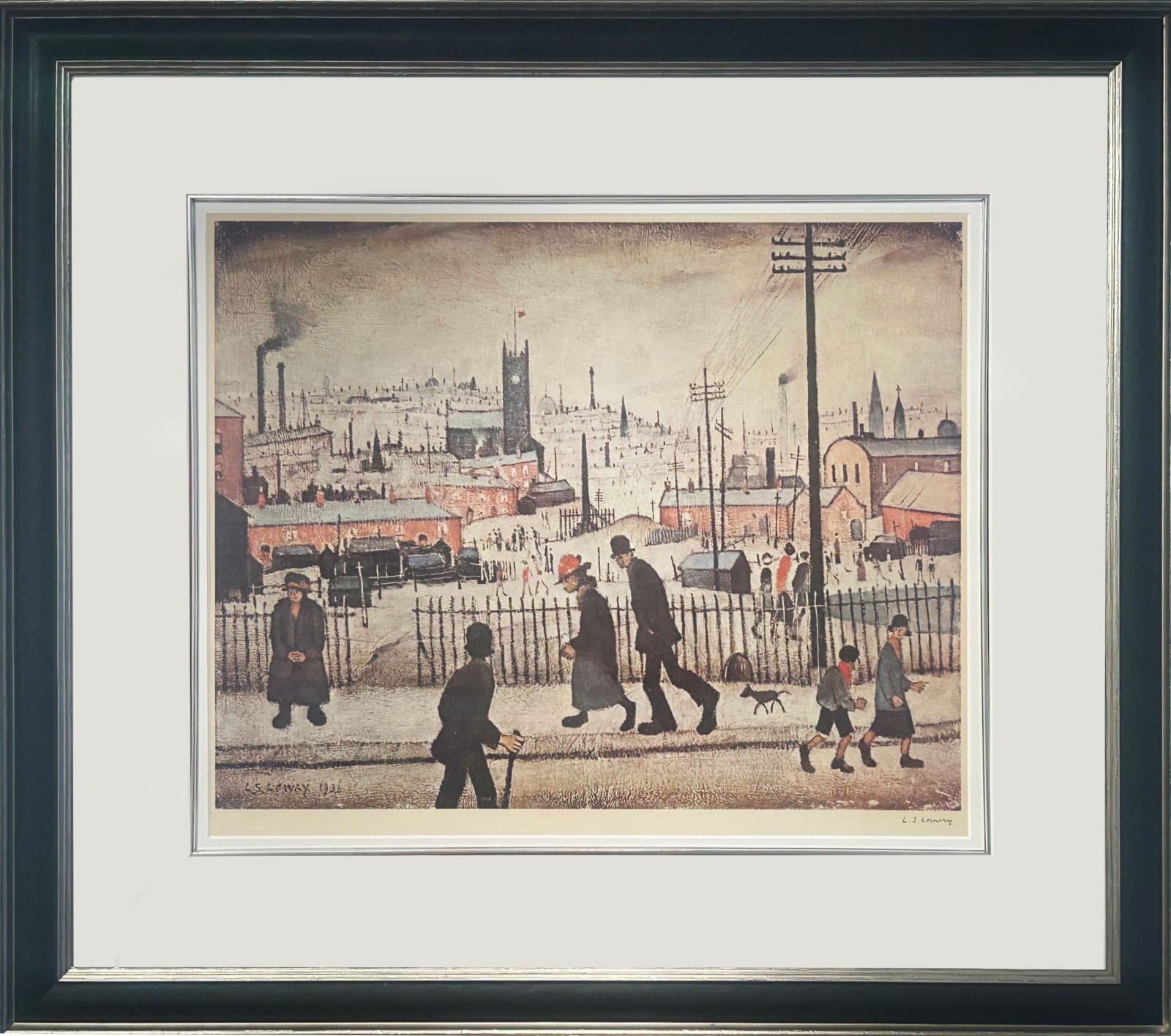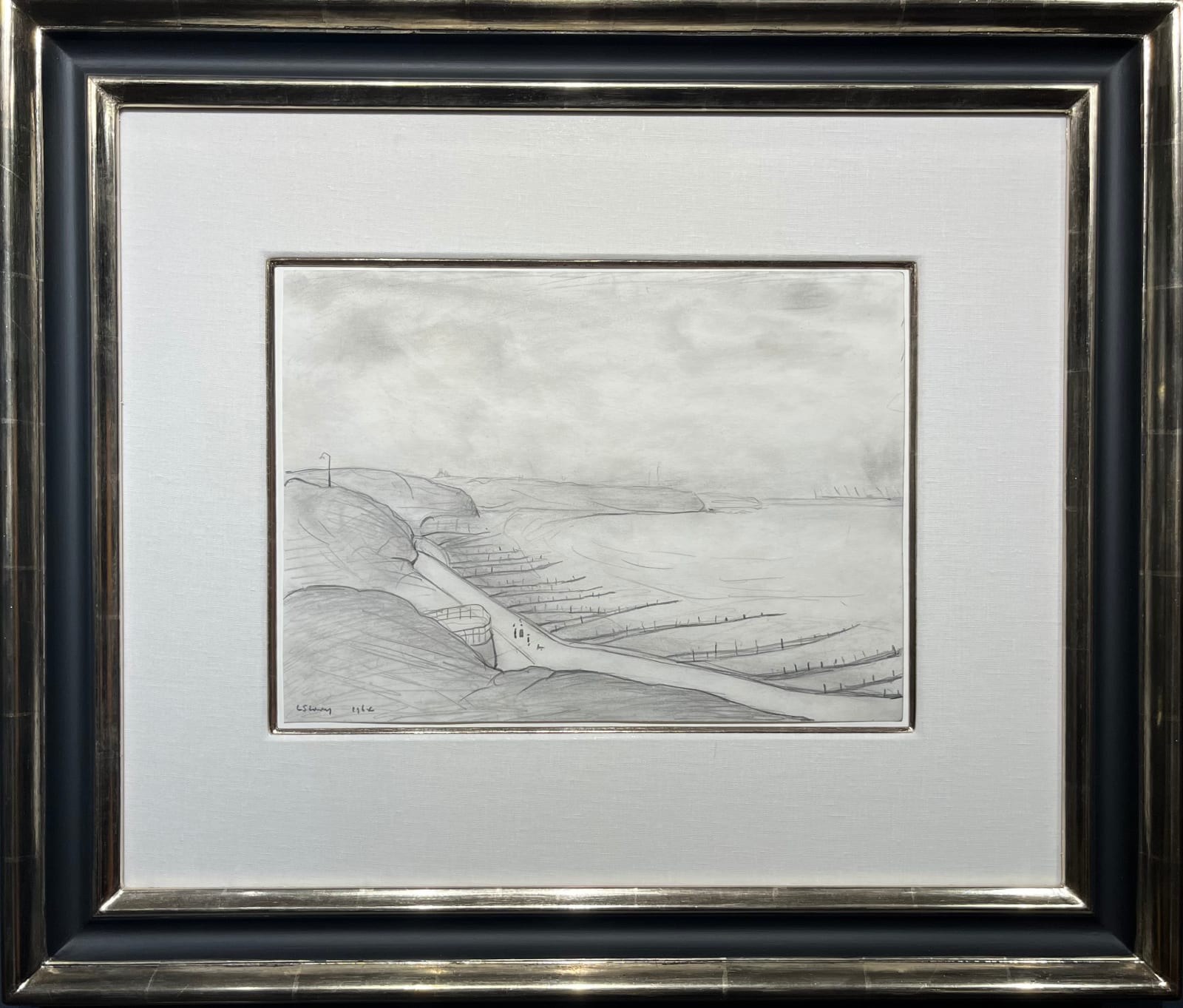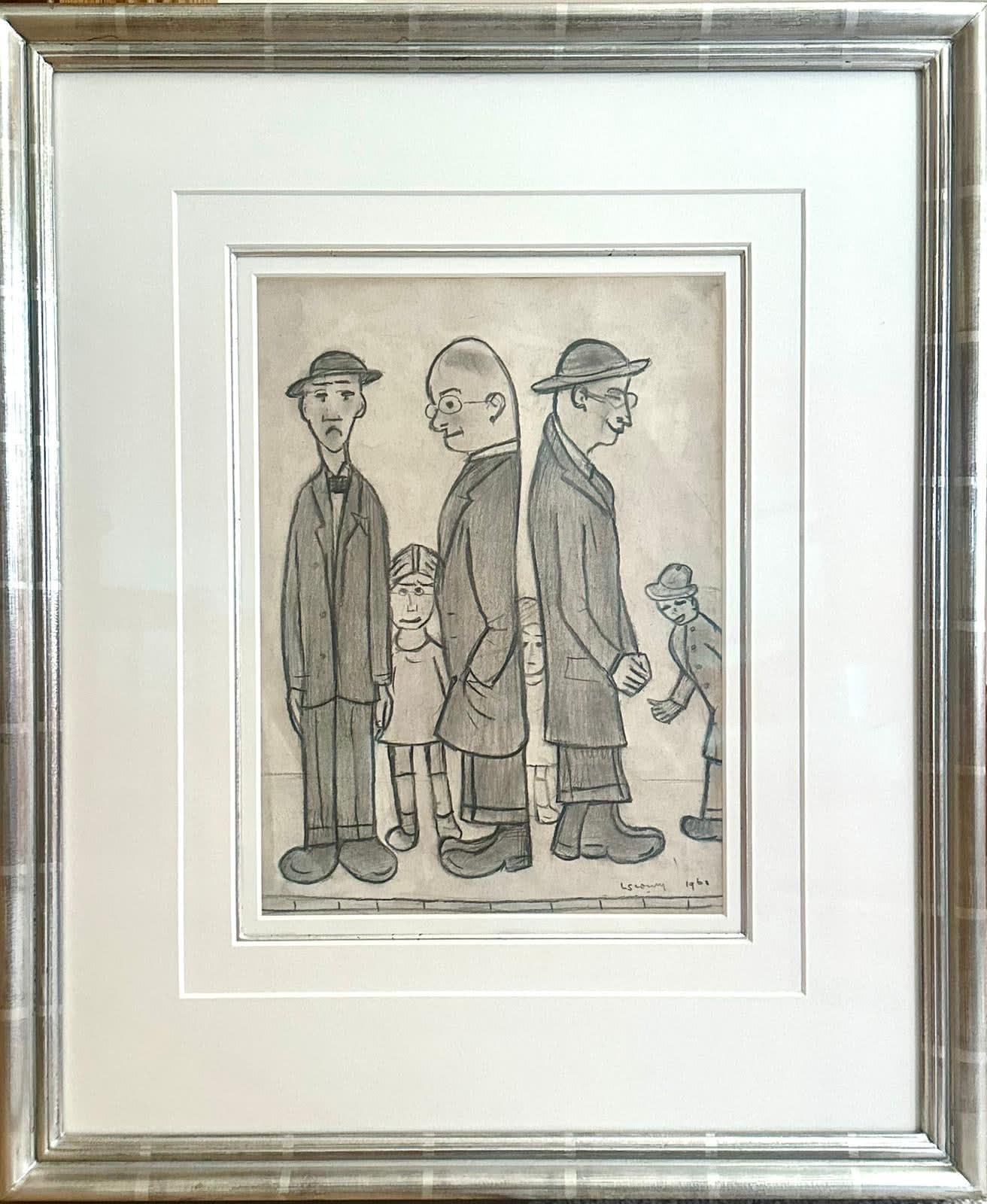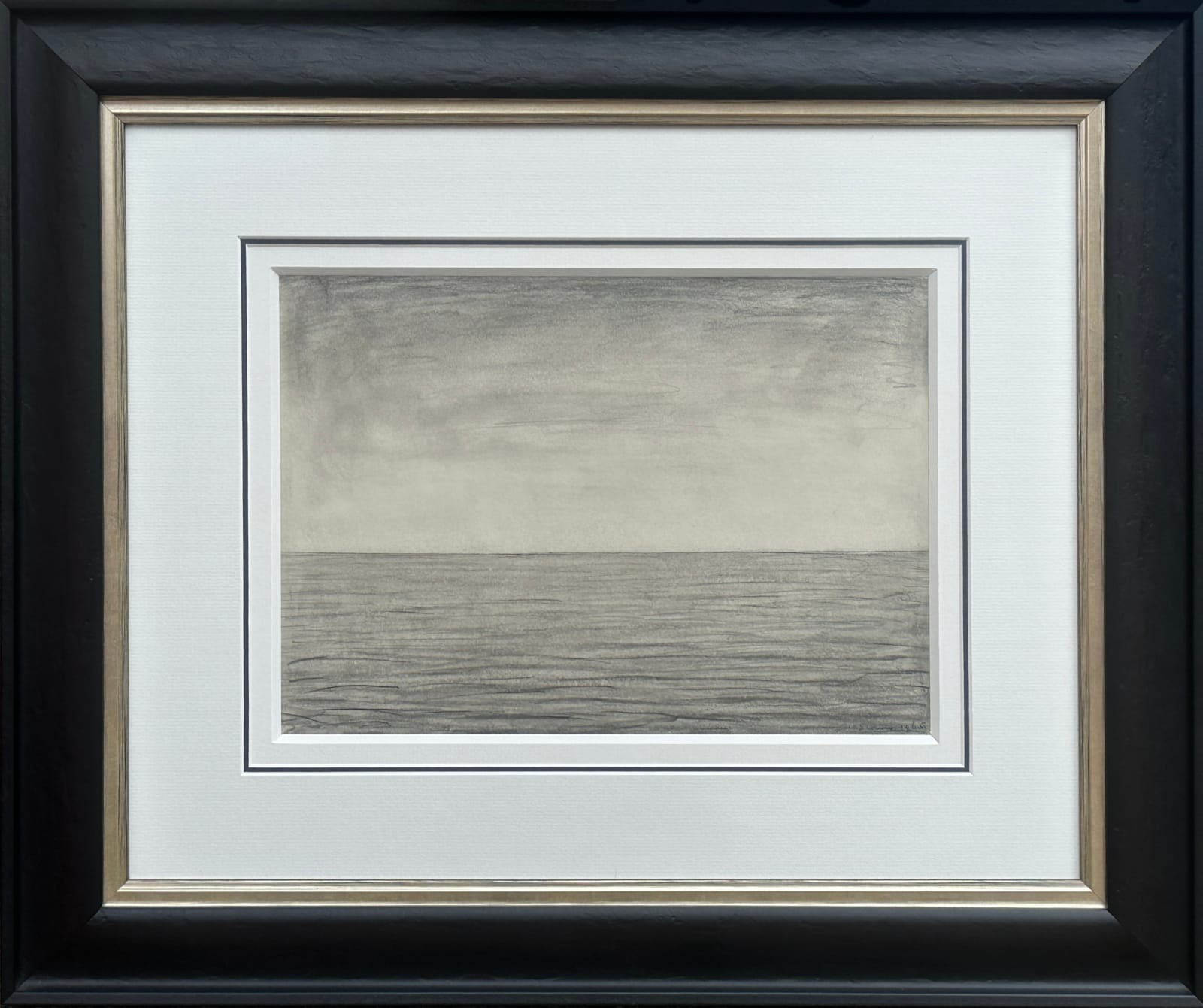Few artists have captured British Life as profoundly as L.S. Lowry. Known by many for his industrial landscapes and “ matchstick men “, Lowry’s work portrays the general sense of poverty and drudgery that characterised life in the industrial era in northern England.
His paintings very often carried a detached but affectionate humour that reflected the humdrum and clockwork comings and goings that marked the everyday existence of the working-class northern community, to which he himself belonged.
Lowry could spend hours staring at a dilapidated, empty, abandoned building and once stated “ I saw in those desolate buildings an image of myself”. Lowry was not the first artist to paint industrial scenes, but his take on the subject was completely unique. A cultural historian once said “ Lowry emphasises the Ironic/ humorous realist survivalism of the working class.
Industrial Landscapes
L.S. Lowry’s most iconic works depict factories, chimneys, and terraced houses, reflecting the industrial transformation of Manchester and Salford. Living in Pendlebury, he was surrounded by the grit and rhythm of urban life, which became the backbone of his art.
Rather than painting idealised scenes, Lowry captured the reality of industrial Britain. Smoky skylines, bustling streets, and endless rows of houses. His muted colour palette emphasised the harshness of the environment, yet his paintings remained full of movement and energy.
Despite their bleak settings, his cityscapes feel alive, with workers, children, and passersby giving these spaces a sense of purpose, turning them into vivid portraits of everyday life.
Working-Class Life

Lowry’s paintings capture the resilience of working-class communities, depicting crowds heading to work, children playing, and neighbours gathering. Though his figures appear simple, they convey routine, hardship, and camaraderie.
Fascinated by ordinary people, Lowry observed and sketched their gestures and movements, portraying both labour and moments of rest. His work reflects social realism, showing the struggles and spirit of daily life.
Despite the bustling streets, there is often a sense of detachment in his art. Figures exist in close proximity yet remain distant, illustrating the isolation of urban life, making his work a poignant reflection of industrial Britain.
Lowry and The Sea

Lowry was as inspired by the coast as he was by his daily industrial surroundings. His seascapes were originally inspired by a trip to Anglesey, Wales, which he took shortly after his mother's death.
In the final decades of his life, Lowry frequently stayed at the Seaburn Hotel in Sunderland, where he painted a series of seascapes. While some were beaches populated with people enjoying a coastal vacatio,n some depict expanses of water and sky separated only by the horizon line and are so empty they border on abstraction.
Matchstick Figures

Lowry’s “matchstick men” became his signature style, capturing the essence of human movement and experience with simplicity. Rather than focusing on detailed facial expressions, he used elongated, anonymous figures to depict universal working-class life.
Inspired by his observations of people in everyday settings, Lowry’s figures are deliberately simplified yet expressive. Whether trudging to work, playing in the streets, or wandering alone, they embody a sense of routine, resilience, and quiet emotion.
Though some critics dismissed them as crude, Lowry’s matchstick figures are deeply symbolic, reinforcing the themes of community, isolation, and endurance that define his unique and enduring artistic vision.
Childhood and Personal Experience
L.S. Lowry’s upbringing and personal struggles played a significant role in shaping his art. Born in Stretford in 1887, he had a complex relationship with his mother, Elizabeth, who was both a dominant influence and a source of emotional strain. After his father’s death, Lowry became her primary caregiver, a role that left him feeling isolated and unfulfilled.
His mother’s unrealised artistic ambitions and his own struggles with rejection from the art establishment fuelled themes of loneliness and perseverance in his work. Many of his paintings, filled with quiet detachment and introspection, reflect not just industrial Britain, but his own emotional landscape, shaped by childhood memories and personal hardship.
The Weather

The grey skies, drizzle, and overcast tones in Lowry’s paintings are more than just a backdrop—they define the mood and atmosphere of his work. Inspired by the industrial North, he used muted colours to capture the grit and melancholy of working-class life.
Beyond realism, weather in his art serves a symbolic purpose. Dark clouds and heavy skies reflect hardship, while occasional brightness hints at resilience and continuity. His signature monochrome tones make his scenes feel both timeless and emotionally charged, reinforcing the stark beauty of industrial Britain.
Death and Absence
Themes of loss and emptiness run through Lowry’s later works. After his mother’s death in 1939, his paintings became more introspective, often featuring deserted streets, solitary figures, and muted tones. His grief is reflected in works where absence is as significant as presence.
Lowry’s depictions of shadowy figures and empty spaces suggest a world where people fade, leaving only memories behind. His later works, such as The Funeral Party, evoke a profound sense of isolation and mortality, making them some of the most emotionally resonant pieces of his career.
Lowry’s Legacy
In 1976, after his death a retrospective exhibition was staged at the Royal Academy, which drew more than 350,000 visitors. This was an all-time attendance record for a twentieth-century artist at the Academy.
L.S. Lowry’s paintings are more than just art, they are windows into the soul of industrial Britain. Each stroke captures the grit, resilience, and quiet beauty of a bygone era, making his work as powerful today as it was in his time.
At Contemporary Six, we offer a rare opportunity to see and acquire original pieces by Lowry, ensuring authenticity and historical significance. Whether you’re a serious collector or discovering his art for the first time, a visit to our gallery will deepen your appreciation for one of Britain’s most beloved artists.
Come and experience Lowry’s world for yourself! Step into the industrial streets, feel the emotion behind every figure, and take home a piece of history. Visit Contemporary Six today or contact us to learn more about our available works.

